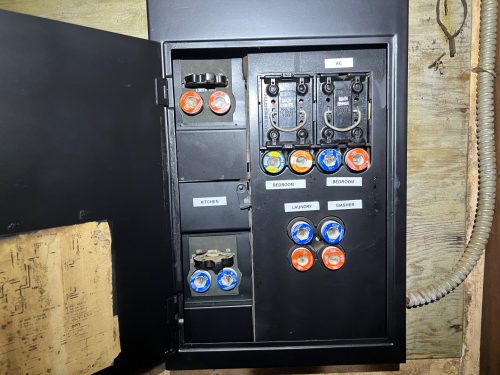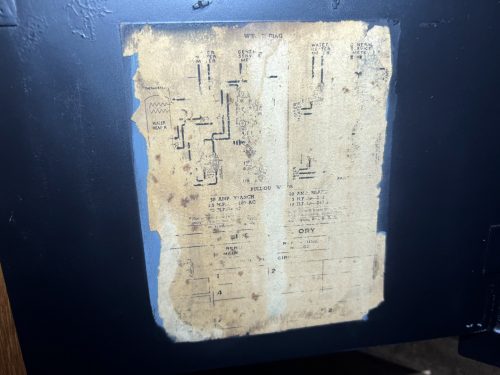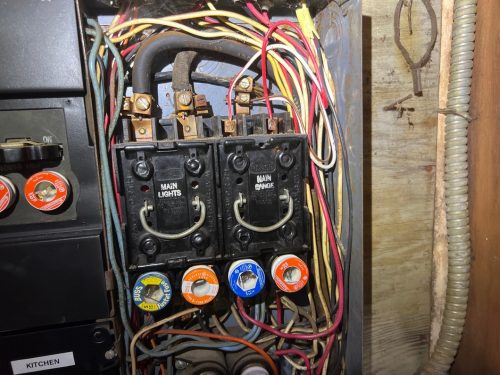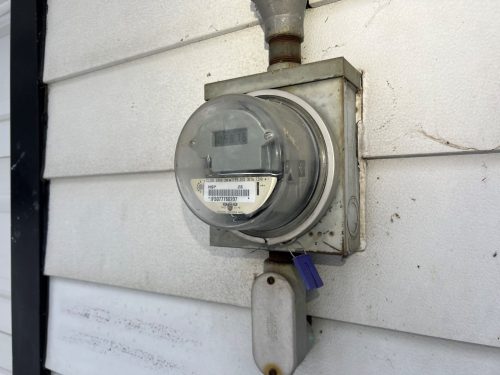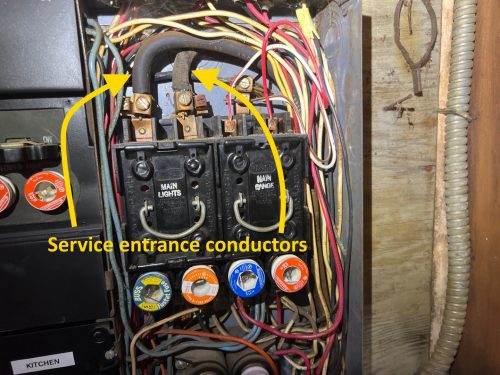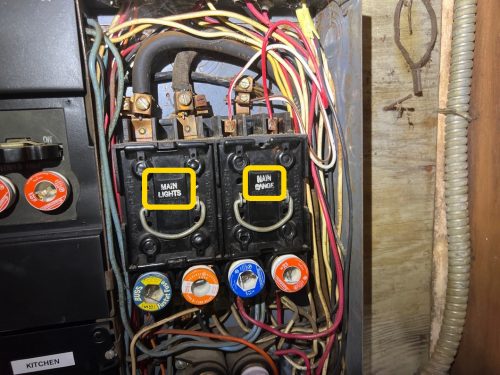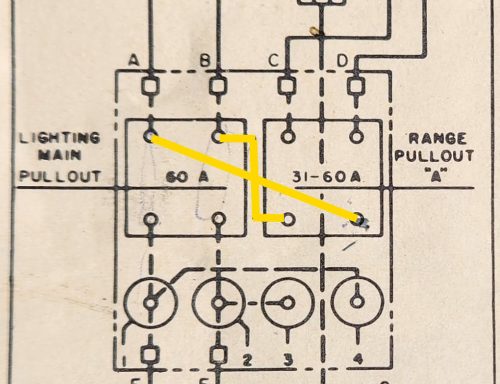One of the inspectors on our team here at Structure Tech recently asked the rest of our team to help identify the size of this old fuse panel. Take a look at the photos; what do you think? Is this a 60-amp service or a 100-amp service?
Usually, the fuse panel diagram will have some writing on it to indicate the service size, but this label was way too damaged and faded to be of any use to us.
Here’s a photo of the inside of the panel:
And just for fun, here’s a photo of the electric meter at the exterior:
All clues clearly point to this being a 100-amp service. Working backward, let’s start with the meter. We have a square meter box, which almost always indicates a 100-amp service. I’d estimate that about 98% of homes with square meter boxes have 100-amp services. But that’s not a hard and fast rule; just a clue.
Next, we look at the service entrance conductors (SECs); those big, thick wires coming into the fuse block at the top left. The minimum size aluminum conductor for a 100-amp service is 2 AWG.
Do we have that? It can be tough to tell from a photo, but I’d say yes, we have that. So the SECs point us in the direction of 100 amps.
And finally, we look at the labels on the two fuse pull-out boxes; they’re both labeled main.
This means we have a split-bus panel. Check out my link for a blog post and video I did about these panels for the full story, but the short version is that split bus panels have more than one circuit breaker or fuse to disconnect all of the power.
In this particular case, the fuse block on the left provides power to everything… except for the fuse block on the right. The fuse block on the right is fed directly from the SECs; if you remove the fuses on the left, the fuses on the right will still be energized. You have two mains. In this case, you might expect to find 60-amp fuses for the one labeled MAIN LIGHTS and 40-amp fuses for the one labeled MAIN RANGE.
If the panel label was still intact, we might expect to see something like this:
To fully understand how this is wired, I highlighted an important part of this diagram.
This makes it clear that the fuse block on the left does not provide power to the fuse block on the right. They’re both mains. And of course, the panel label I’m showing here is for a 100-amp fuse panel, which is clearly labeled as 100 AMP.
Summary
All of the clues clearly point me toward this being a 100-amp electric service. In fact, I’d bet a huge sum of money on it. But nevertheless, we couldn’t find a label on that panel saying it was a 100 amp panel. For our inspection report, we said that this was likely a 100-amp service, but we could not be completely sure because of the illegible label.

